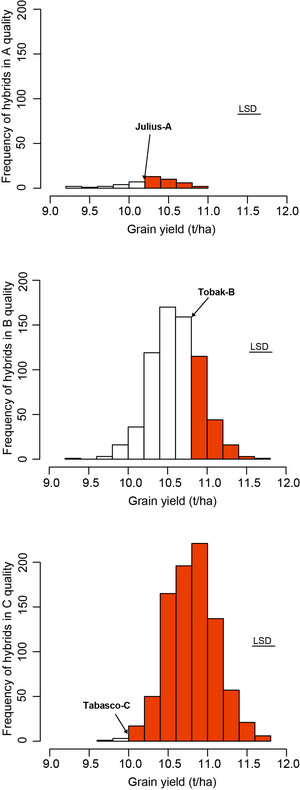Heterosis and yield stability
Heterosis in wheat is considerably smaller than in allogamous crops like maize. We determined in our trials an average midparent heterosis for grain yield of 10%. Commercial heterosis, that is the difference between the best hybrid and the best commercial line variety, was around 1 ton per hectare. This was surprisingly high, as we did not select our parental lines on hybrid performance. Even more, quality measured as protein content and sedimentation volume was not that bad than expected.
Although most hybrids were in quality class B and C, we found also few hybrids of A quality. And in all quality classes, we determined a commercial heterosis of at least 1 ton per hectare. Consequently, the production of hybrid wheat seems from this point of view very interesting.
Form maize and other hybrid crops it is reported, that the yield stability of hybrids is better than that of lines. In contrast to line varieties, it seems that hybrids have smaller genotype × environment interactions. We could confirm this hypotheses for hybrid wheat, hybrid barley and hybrid triticale. This is a large advantage for hybrid breeding and farming facing the negative impact of the climate change.

